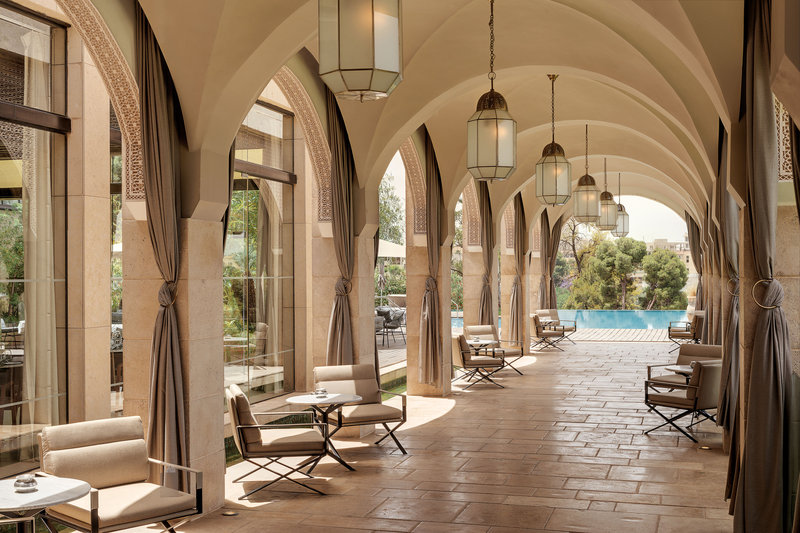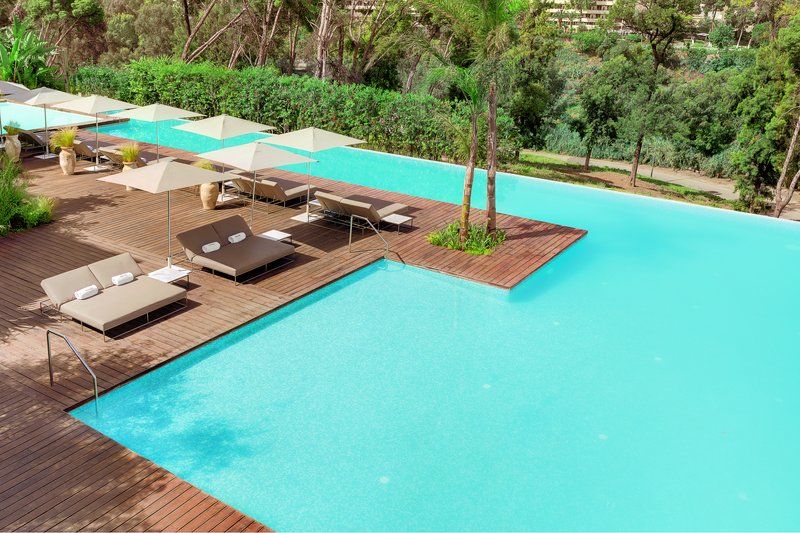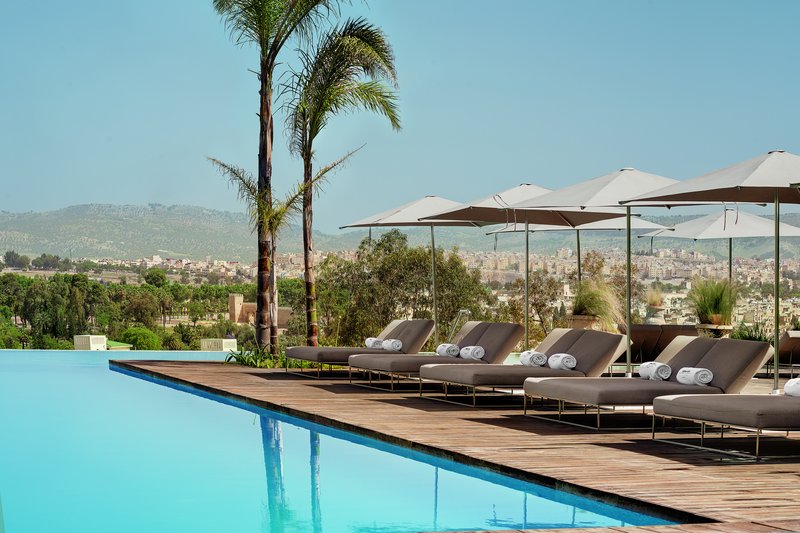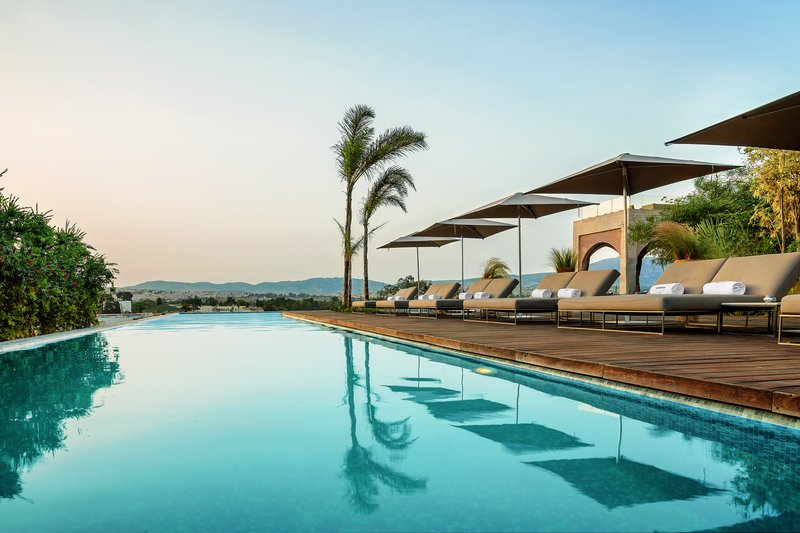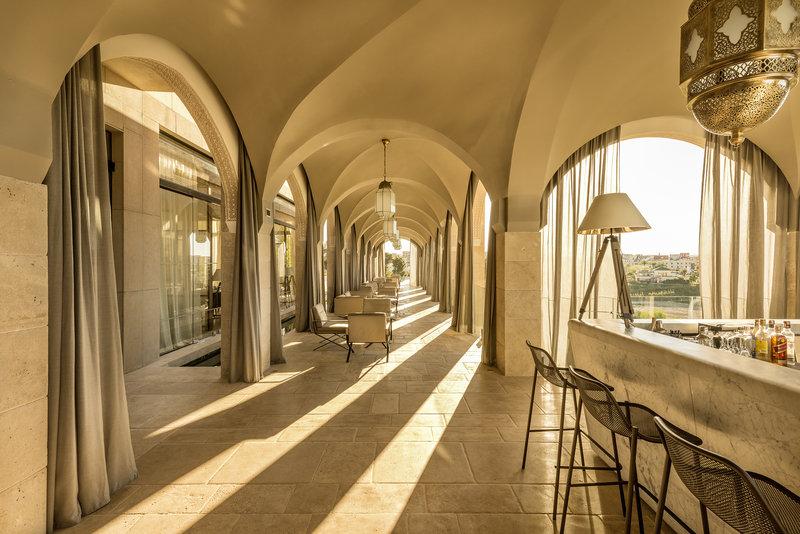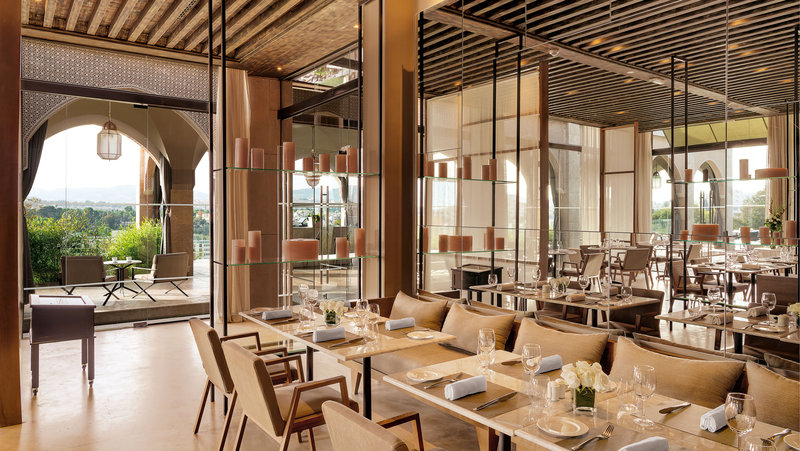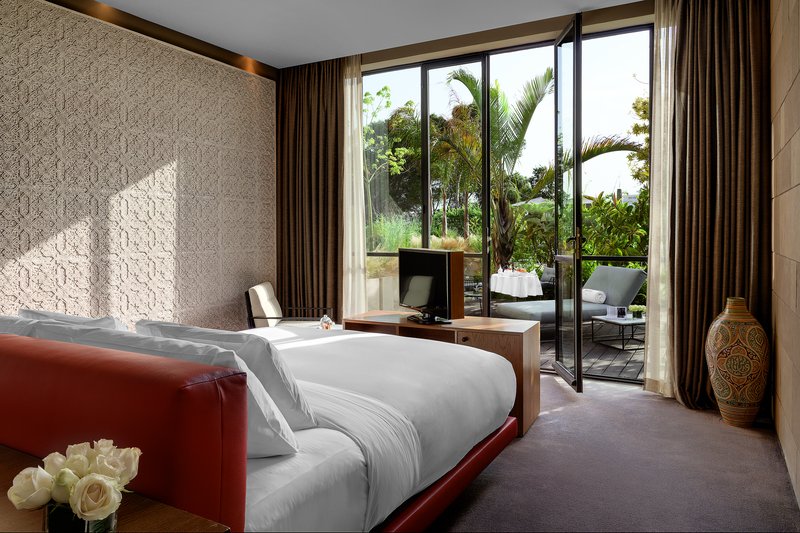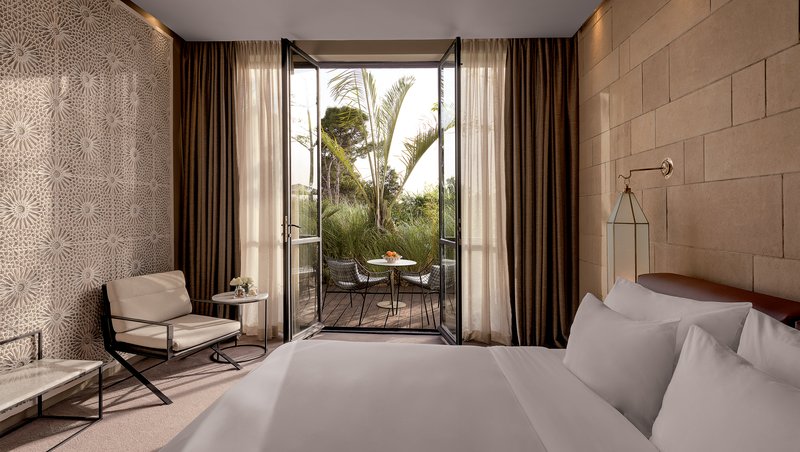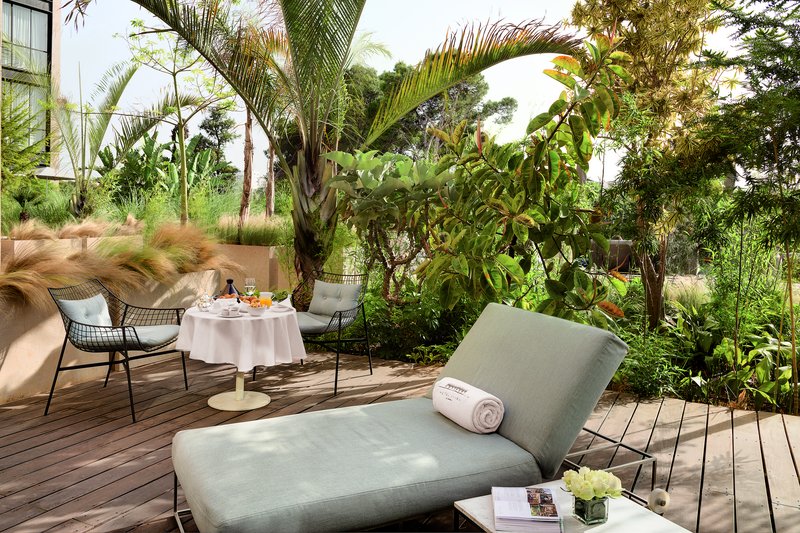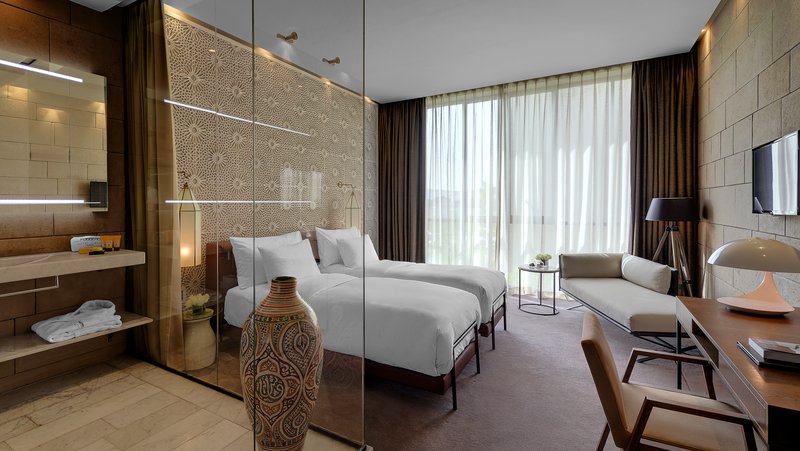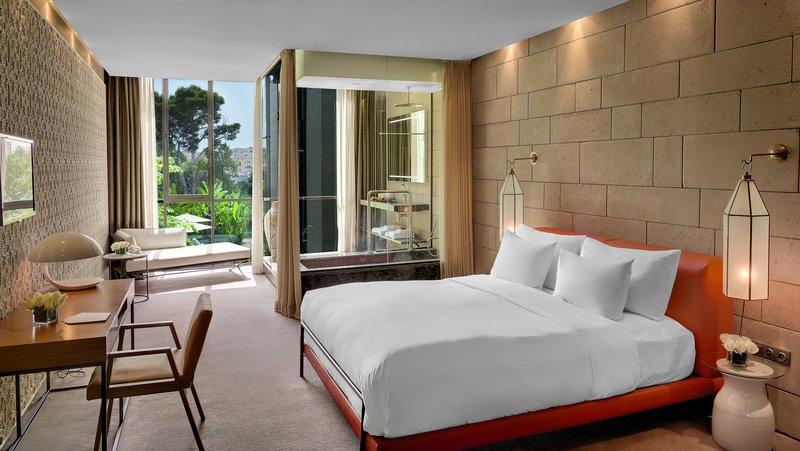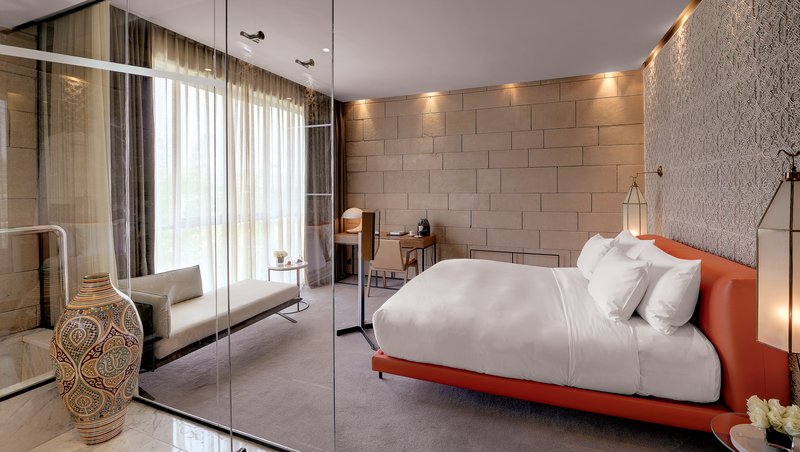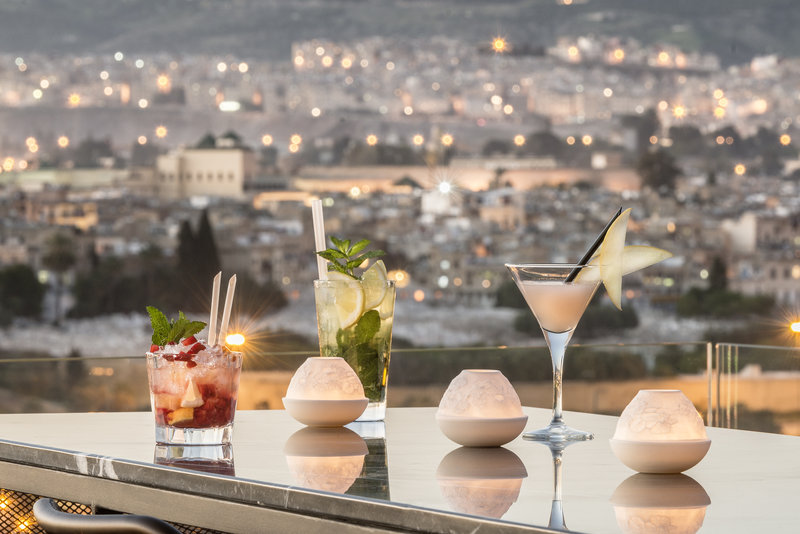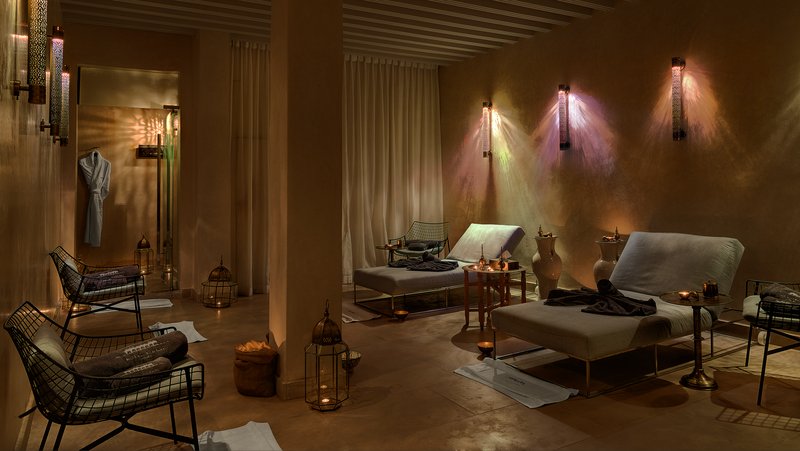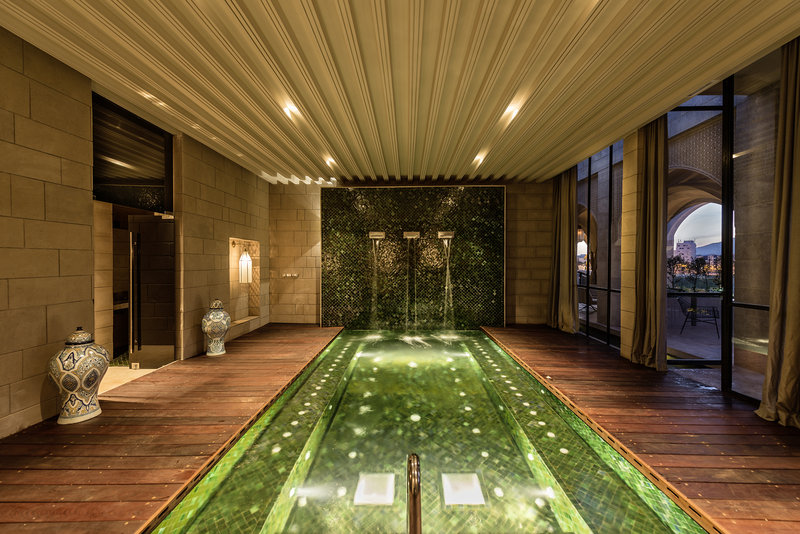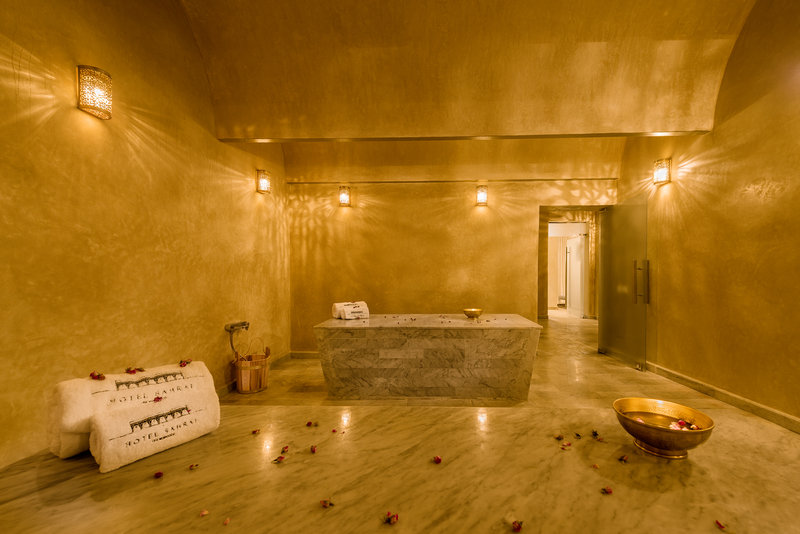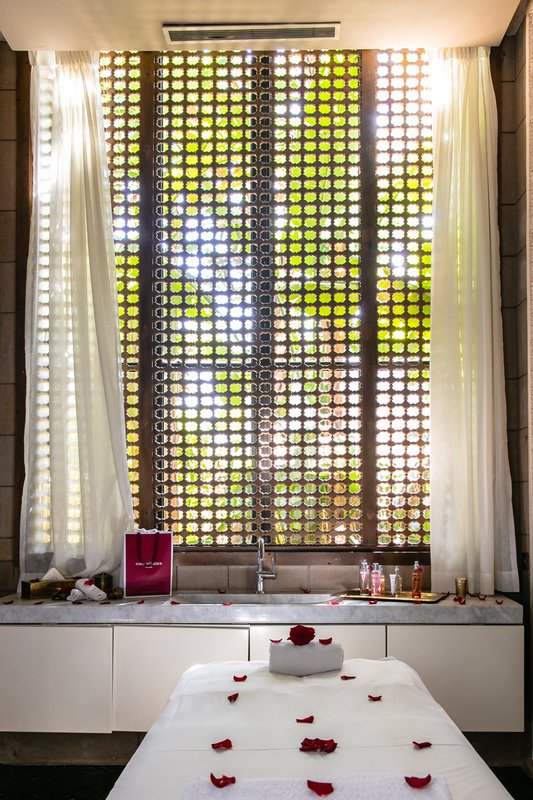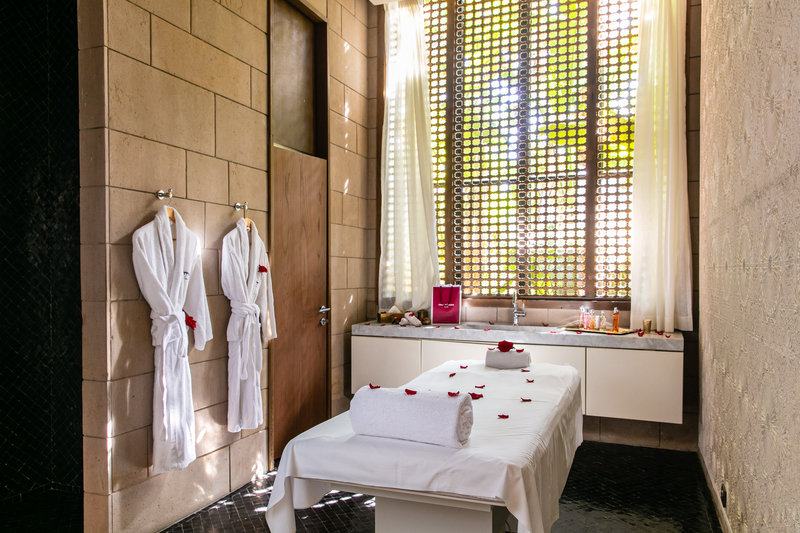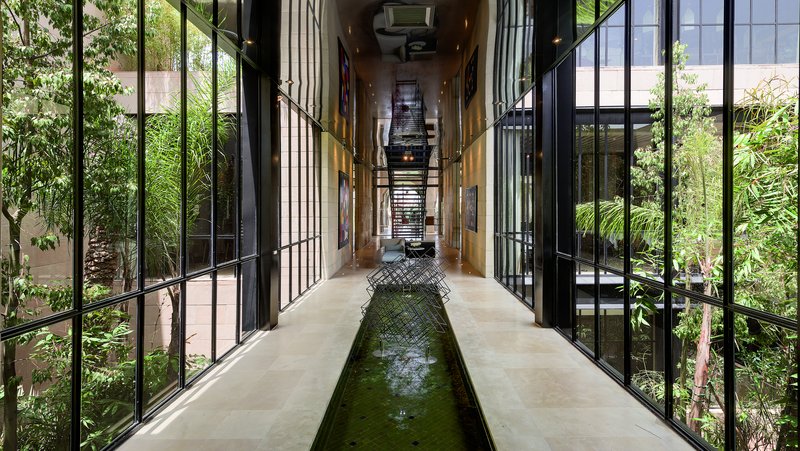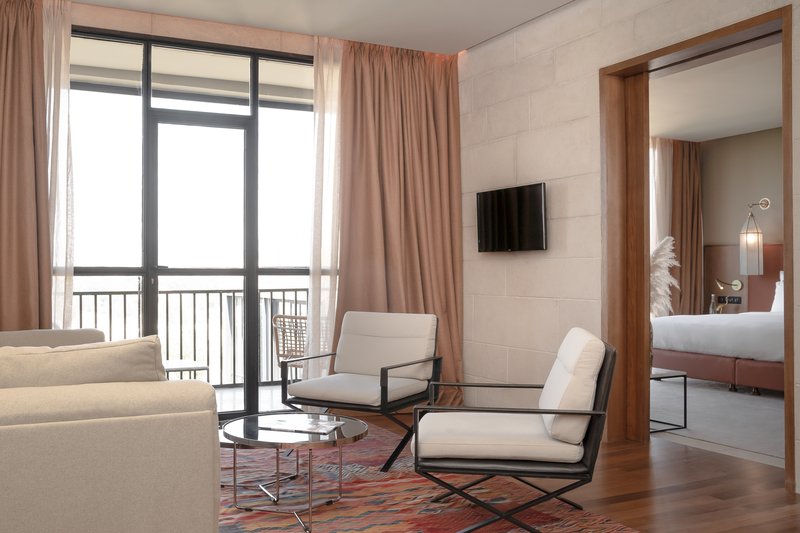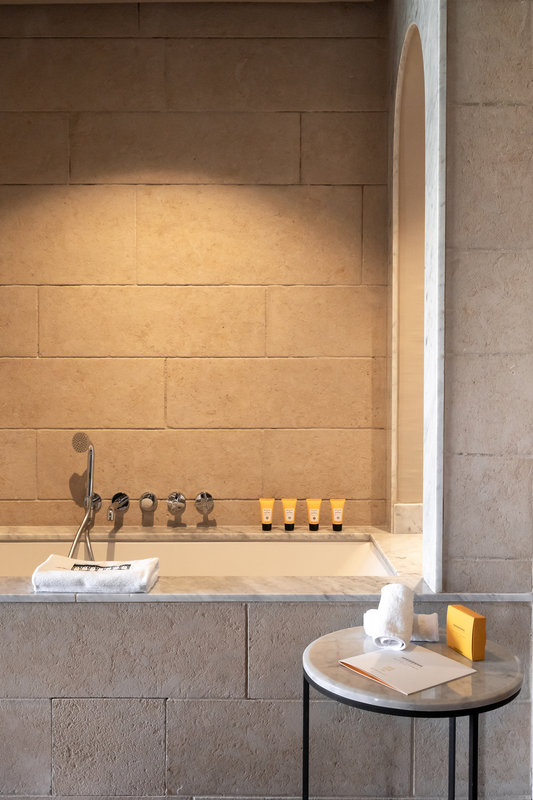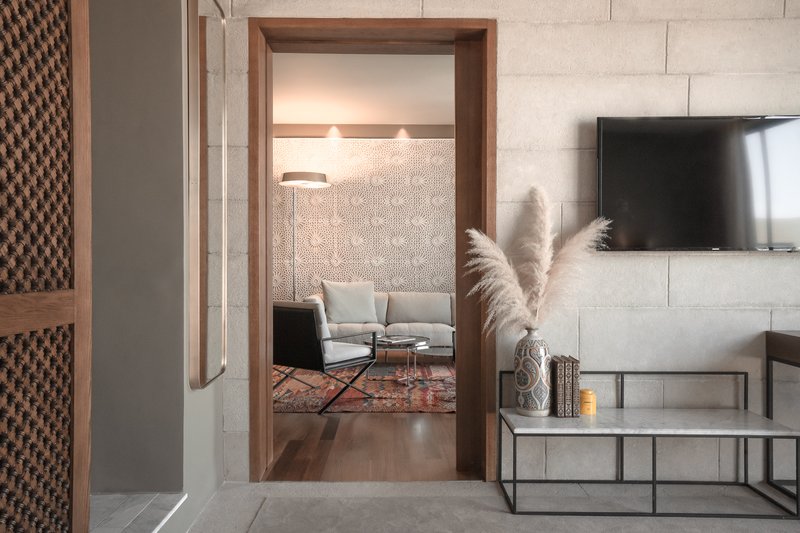Things to do
LANDMARKS
Once a summer palace, Batha Museum is now home to a wonderful collection of Moroccan arts. Here you can view everything from cobalt Fassi ceramics to intricate zellige tiling. To see the tiles in situ, as well as beautifully carved plasterwork, visit the 14th-century Medersa el-Attarine. After wandering around the central courtyard, hop across to Kairaouine Mosque and University. Said to be the oldest mosque in the world, its striking green roof is an iconic part of the Fez city skyline.
SHOPPING
Morning is the best time to travel to the leather souq and Chaouwara Tanneries. That’s when the stone vats are filled with vibrant dyes of red, indigo and turmeric yellow. You may even catch a glimpse of the tanners working leather with their bare feet. Pick up some traditional babouches (leather slippers) in the Medina, or go treasure hunting for Fassi pottery, colourful carpets and jewellery. If you find something, be prepared to haggle – it’s a way of life for Fez shopkeepers.
FOOD
Dive into the Medina and you’ll soon get a taste for Fez’s food culture. It’s here you’ll see – and smell – stalls piled high with herbs, spices and dates. As you stroll, look out for communal ovens (furan) where locals bake bread. Then visit the honey souq to explore every flavour and shade of this sweet nectar. You’ll have plenty of restaurants to choose from too – ranging from traditional Moroccan to contemporary fine dining.
